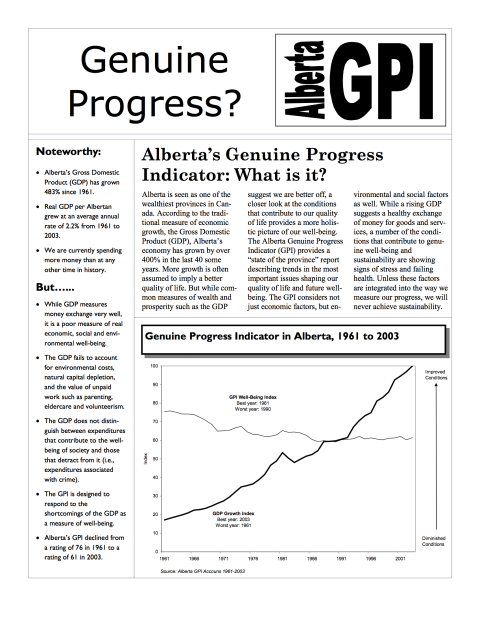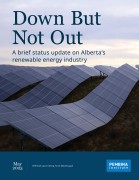This two page document summarizes the trend in Alberta's Genuine Progress Indicator from 1961 to 2003. The trend in the GPI is compared with that of the Gross Domestic Product (GDP). The results indicate that the continued growth in the GDP in the province may be coming at the expense of environmental, social and even some economic conditions. For example, between 1961 and 2003, Alberta's composite GPI indicator declined from a score of 76 to 61 at the same time that the GDP index increased from a score of 17 to 100. Other trends worth noting: suicide rates in Alberta are higher than the national average, obesity rates have increased, there are more problem gamblers, making higher wagers than in the past, premature mortality and infant mortality has declined, life expectancy has increased, there are fewer fatal car accidents, unemployment rates are down, weekly wages are up, household debt is on the rise, the gap between the rich and the poor is growing, as are greenhouse gas emissions and forest fragmentation.
The Alberta GPI Summary Report

Programs
Leading the transition to clean energy requires advancing solutions to today’s energy challenges from various angles.
The Pembina Institute has spent four decades working to reduce the environmental impacts of Canada’s energy production and to provide actionable ideas on how to implement clean energy.












